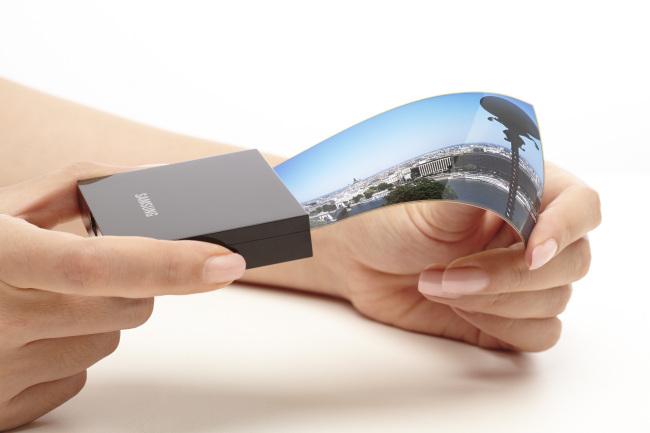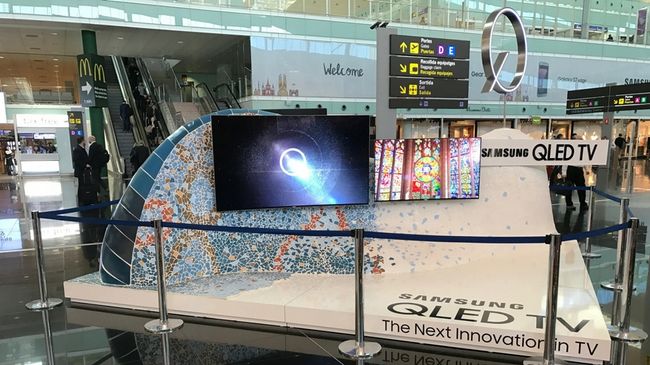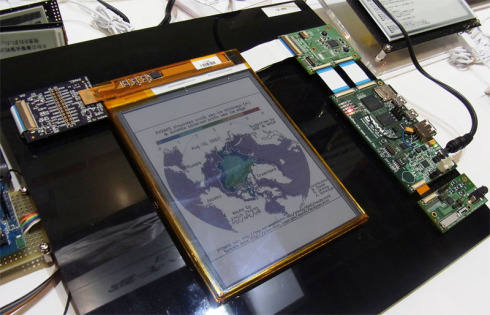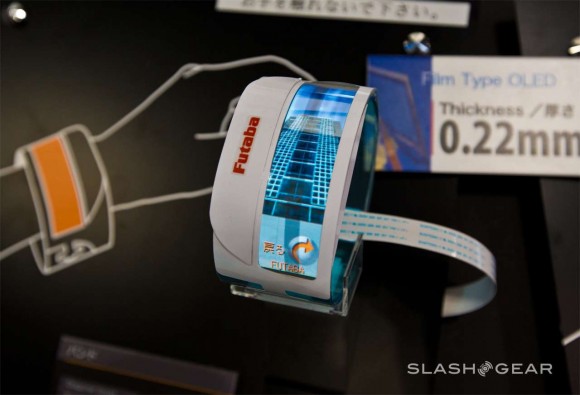
Image via Cobia Boats / Florida Sportsman
Why Touchscreens Are a Good Option for Marine Boat Manufacturers "The collaboration between Garmin, Scout and Mastervolt was the first of its kind for the boat industry. “The future for Scout Boats is that all of the models will someday have digital switching.” Stands to reason that as more boat companies add digital switching to their models, the cost of components will come down. Programmable control over systems allows a boat builder to consolidate several items that an owner may wish to activate simultaneously. These “modes,” as they are called, may include choices like night fishing and entertainment, to name a few. Touch the screen for “night mode,” for example, and you could illuminate nav and courtesy lights while simultaneously dimming the MFD screens. In fishing mode, the MFD might bring up the GPS, fishfinder and radar while turning on the baitwell and raw water washdown. At the sandbar, entertainment mode could power up the stereo to a preset channel. The possibilities for customization are wide." via Florida Sportsman
How can users touch a touchscreen that isn't there? "An LCD screen lies face-up on the bottom of the setup, displaying the interface video – this could be a numeric keypad, a menu board of icons, or anything else. Sitting at a 45-degree angle above that screen is an aerial imaging plate (AIP), which is a sort of two-way mirror. When the user views that plate from the front, they see the LCD screen reflected through it. The illusion, however, is that the screen is hovering parallel to them at the front of the HaptoMime, instead of lying flat on its back at the bottom. It looks like they could reach in and touch the projected display, even though their finger would actually just pass right through to the AIP." via Gizmag
How Does LG Make OLED TVs Affordable? "LG believes that its M2 facility will deliver yield rates of around 70% from December. Also giving LG an OLED production advantage is its maskless WRGB patterning system, which does away with the expensive (and difficult to keep uniform at high resolutions) Fine Metal Mask system other brands have been using. LG’s final OLED production efficiency comes from its Solid Phase Encapsulation system. This replaces the previous Edge Seal approach, and enables LG to use an easier-to-handle metal rather than glass foundation for the OLED cell structure." via Forbes
Why Is OLED Different and What Makes It So Great? "OLED technology, first successfully implemented in 1987 by Kodak researchers Ching W. Tang and Steven Van Slyke, takes this same idea as LED, but flattens it. Rather than an array of individual LED bulbs, OLED uses a series of thin, light emitting films. This allows the OLED array to produce brighter light while using less energy than existing LCD/LED technologies. And since these light-emitting films are composed of hydrocarbon chains, rather than semiconductors laden with heavy metals like gallium arsenide phosphide, they get that "O" for "organic" in their name." via Gizmodo
Sharp's LCD-challenging MEMS display coming in 2015 "LCD screens are built on a bright, white backlight that sits at the rear of the screen. Each pixel is divided into red, green and blue subpixels with color filters. Current applied to the liquid crystal in front of each of those filters allows or blocks transmission of light of that color. In a MEMS screen, there are no red, green or blue subpixels. Instead, a tiny electro-mechanical shutter allows or blocks light transmission through each pixel. Color is provided by the backlight, which cycles rapidly through red, green and blue. The shutters are synchronized to the backlight, moving open and shut in as little as 100 microseconds to let through light of the appropriate color." via CIO
Display database for engineers Search thousands of display panels by multiple characteristics and compare results side-by-side using the display database multisearch.
How does MIT spinout’s quantum-dot technology make LCD TVs more colorful, energy-efficient "Color IQ is a thin glass tube, filled with quantum dots tuned to red and green, that’s implemented during the synthesis process. Manufacturers use a blue LED in the backlight, but without the need for conversion phosphors. As blue light passes through the Color IQ tube, some light shines through as pure blue light, while some is absorbed and re-emitted by the dots as pure red and pure green. With more light shining through the pixels, LCD TVs equipped with Color IQ produce 100 percent of the color gamut, with greater power efficiency than any other technology. " via MIT News
Scientists train robots to pull apart LCD screens – without breaking them "The group, comprising researchers from UNSW's School of Mechanical and Manufacturing Engineering and School of Computer Science and Engineering, started with LCD screens. The idea is to program self-learning routines into the robots, so that they can learn from their errors. ..."The idea is to remove the display and printed circuit board without damaging them because the rest can be recycled." The university hopes to attract participation in industry trials, which – given the amount of e-waste out there – Vulture South hopes isn't too hard to find." via The Register
How the Blue LED Changed the World, and Won a Nobel Prize "Akasaki and Amano, working as a team at Nagoya University in Japan, and Nakamura, working separately at Nichia Chemicals, a small company in Tokushima, and now at the University of California, Santa Barbara, built their own equipment and did thousands of experiments in the late 1980s, succeeding in obtaining the bright blue light from semiconductors. In the 1990s, the three scientists were able to make the blue LEDs more efficient. The prize, the assembly says, is meant to reward inventions that provide the most “benefit to mankind,” as per the wishes of Alfred Nobel. This invention has already changed the way we light buildings as well as the screens in our living rooms, on our desks, and in our pockets, and has the potential to provide light where electricity is hard to come by and clean polluted water, according to the assembly." via Newsweek
Why Samsung is betting on B2B market as next growth engine "The world's top smartphone and memory chip maker is pushing for a deal with premium carmakers in North America and Europe to supply digital signage platforms. Digital signage refers to large-sized commercial displays including outdoor advertising and hologram panels that use technologies such as liquid crystal displays (LCD) and light-emitting diodes (LED). Samsung has set this year's target for overseas digital signage about 50 percent higher than a year earlier, company officials said. In 2013, it won 2,000 orders from European car manufacturers. The tech giant's move came as a desperate effort to find a stable source of profit since the ailing smartphone business is taking its toll with a fall in global market share, sandwiched between Apple Inc.'s high-end strategy and cheaper products by Chinese rivals." via Yonhap News Agency
New LCD Technology Draws No Power with Static Images "One of the big benefits of e-Ink technology is that it draws no power when a simple static image is being displayed or when you are reading a page in an eBook. The only time power is being drawn is when a full page refresh occurs or if you are interacting with the screen. A new LCD initiative is underway at the Hong Kong University of Science and Technology. They have developed a new type of LCD screen that works in a similar fashion to e-Ink. It can hold a static image for years, with no power. The University has developed Optical Rewritable liquid crystal technology that carries no electrodes and uses polarizer’s as a substitute. It will show images in full color, but not draw any power as the image is shown. This would be tremendously beneficial to luggage tags, grocery price-tags or even in the next generation of color e-reader." via Good E-Reader
Do you have content to share with Display Alliance? Anyone can post press releases, white papers, commentary, videos, and more in the open section.
Tech firm proposes using OLED screens to make aircraft cabins appear see-through "A conceptual video from the Centre for Process Innovation (CPI), which works with clients to prototype projects and ideas, shows a plane interior with seemingly invisible walls, panels and ceiling. These would be covered with screens made from flexible Organic Light Emitting Diode (OLED) technology – ultra-thin, lightweight and malleable displays – streaming high-quality footage broadcast live by cameras outside of the plane. ...As well as frightening aviophobes, removing windows entirely would significantly reduce the weight of a craft – potentially reducing its fuel consumption and carbon footprint. (Video)" via Dezeen
Samsung and the curious case of the red OLED "The colors displayed on Samsung’s Galaxy Tab S, according to Dieter Bohn, an editor for the tech-lifestyle website The Verge, “still tend to look over-saturated to my eyes,” though he added that “Samsung has toned things down considerably from years past.” In an otherwise positive review of a newer Galaxy S5 smartphone model, Anandtech, a computer hardware site, made note of “minor issues with excessive green in the color balance.” In essence, people seem to agree that the colors of AMOLED displays are more vivid. Whether or not those colors are natural or accurate based on what the eye would see in real life is another matter entirely. ...Colors are important on mobile devices for one overarching reason: managed expectations. Knowing that Twitter uses a sky blue color for its logo, it can be jarring for users and marketers alike to see a version with a tinge of green." via Fortune
How LG Display created world’s narrowest 0.7mm bezel LCD display "LG managed to accomplish this through a combination of two new manufacturing techniques. Its Neo Edge module processing technology uses an adhesive to seal the edges of the circuit board, rather than double-sided tape. This helps cut down on bezel width by removing the need for a plastic guide to attach the panel to the LCD backlight. The tight seal also helps to reduce light leakage, as well as making the panel water and dustproof." via Android Authority
China TFT-LCD panel, module makers target car infotainment "Automotive electronics represent the third key application for small and midsize TFT-LCD panels, and as such will continue to attract the attention of display component makers worldwide. In China, major panel players are at the forefront of initiatives to penetrate this market. Compared with popular devices smartphones and tablet PCs, the category has steeper requirements on reliability and durability. Products are designed to operate in a wider temperature range, typically between -40 and 85 C. They should withstand vibration and shock, in addition to being dust- and water-resistant. Releases must meet automotive-specific standards, including JIS, ANSI and SAE." via Global Sources
'Largest interactive advertising display in the world' set to light up Times Square "Second Story, part of agency SapientNitro, today announced that it has been engaged by Vornado Realty Trust to help unveil the largest LED advertising display in the world. Installed in the heart of Times Square on the Marriott Marquis, the interactive digital display stretches eight stories high and wraps the entire city block. The unveiling will transform the media landscape with its interplay of art, commerce and technology that pushes the boundaries of scale and interactivity, the company said. Second Story, in collaboration with digital artists Universal Everything, produced an experience that includes an abstract graphic narrative broadcast for the screen, through more than 23 million pixels, 10,000 times standard high-definition." via Digital Signage Today
Are you an engineer or have display expertise? Email jason@displayalliance.com to be featured in the interviews section.
Q&A With LG Display Engineers About Flexible Displays "WSJD: How clear can these see-through displays be? Lee: Currently ours come with a 30% clarity. To the normal eye, this level would seem close to those of car windows that have a slight tan on them. The target is to bring up the clarity to 40% by 2017, which should be significantly clearer. In comparison, traditional glass has clarity levels of approximately 92% but getting to this level with the current technology is unlikely without some breakthrough. The trick is to create a bigger, clearer transparent space in each pixel that is not obstructed by the minute transistors, which is extremely difficult both in terms of design and manufacturing." via The Wall Street Journal
Foldable OLED Display From Semiconductor Energy Laboratory (SEL) "The display is made by forming a release layer, sealing layer and color filter layer in this order on a glass substrate. The color filter layer and OLED layer are attached to each other, and the glass substrates are peeled off and replaced with flexible substrates.
SEL informed us that the book type OLED and three fold Display can be bent more than 100.000 times and the displays can be bent up to curvature radius of 2mm and 4mm." via OLED-Display.net
Heads-Up Display Allows Drivers to Race Themselves ""Our passion is driver education,” said Hayes in a phone interview. "[GhostDash] allows you to see what you’re doing to go fast what you’re doing to not go fast." The GhostDash device is made of a thinplastic called Lexan that won’t degrade from exposure to sunlight and can be mounted as easy as plexiglass. This allows GhostDash to be positioned at eye level, providing drivers the ability to keep an eye on the road while noting race time. (Video)" via Boston.com
Carbon nano buds boast better conductivity than ITO "Canatu Oy, a Finnish startup, has developed the carbon NanoBuds (CNBs), which it describes as a hybrid nanomaterial that combines the conductive properties of carbon nanotubes (CNTs) and the chemical reactivity of fullerenes (hollow carbon molecules). ...Canatu is in business to manufacture coated PET and glass sheets in volume, for touchscreen manufacturers to process (patterning the electrodes through laser removal). The electrodes are then connected to off-the-shelve capacitive-touch driver ICs the same way they would with ITO. ...Because the deposited NanoBuds form a random network on the surface of the substrate, they can easily be stretched in any direction, explained Vuohelainen." via EET Asia
Will 3D LED Printer Create Heads-Up Display Contact Lenses? "The team, led by Michael McAlpine at Princeton University's McAlpine Research Group, has successfully used its printer to 3D-print quantum dot LEDs -- LEDs that are considered the next step up from OLED. QLEDs shine brighter and with purer colour, at a lower power consumption rate, using cadmium selenide nanocrystals. They're also ultrathin, flexible and transparent -- like, for instance, contact lenses. "The conventional microelectronics industry is really good at making 2D-electronic gadgets," McAlpine said. "With TVs and phones, the screen is flat. But what 3D printing gives you is a third dimension, and that could be used for things that people haven't imagined yet, like 3D structures that could be used in the body."" via CNET
Researchers create 3-D stereoscopic color prints with nanopixels "By designing nanopixels that encode two sets of information—or colors of light—within the same pixel, researchers have developed a new method for making 3D color prints. Each pixel can exhibit one of two colors depending on the polarization of the light used to illuminate it. So by viewing the pixels under light of both polarizations, two separate images can be seen. If the two images are chosen to be slightly displaced views of the same scene, viewing both simultaneously results in depth perception and the impression of a 3D stereoscopic image. ..."We have created possibly the smallest-ever stereoscopic images using pixels formed from plasmonic nanostructures," Yang told Phys.org. "Such stereoscopic images do not require the viewer to don special glasses, but instead, the depth perception and 3D effect is created simply by viewing the print through an optical microscope coupled with polarizers."" via Phys.org
Where Does Latin America Fit Into the Display Industry? "I’m currently in Brazil for the annual Latin Display conference – an SID event that is run to help to educate display users in Brazil, and give an opportunity for others in Latin America to meet and act as a focal point for the discussions about the Brazilian place in the display world. ...The city of Sao Paulo alone has 18 million people. That means that there is a huge consumption of displays in the country in TVs, mobile devices and in cars. However, the country’s involvement in the display side is somewhat limited. ...On the other hand, it’s not obvious, if you wanted to develop a display industry, how you would do it. Europe has many advantages over Brazil, but it still has only a limited display industry, these days. One of the strategies discussed was to pick a technology for the future based on some fundamental science and develop there. However, this has big risks, too. In Europe, Cambridge Display Technology and Novaled were successful companies in the growing OLED market, but both have been acquired in recent years by Sumitomo and Samsung, respectively." via Display Central
What did you think about today's news? Leave a comment here and share your thoughts.

 Display Alliance
Display Alliance
















